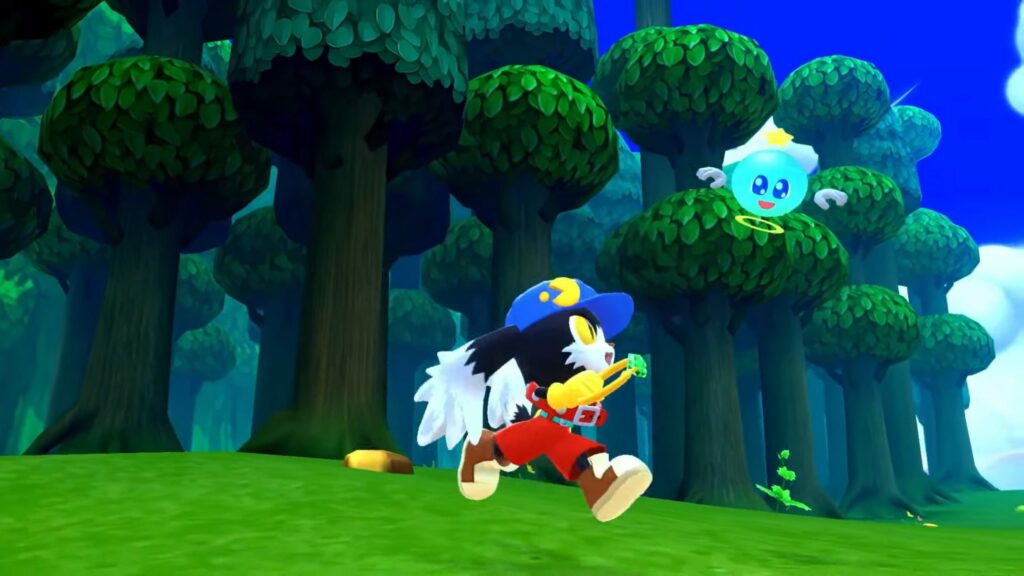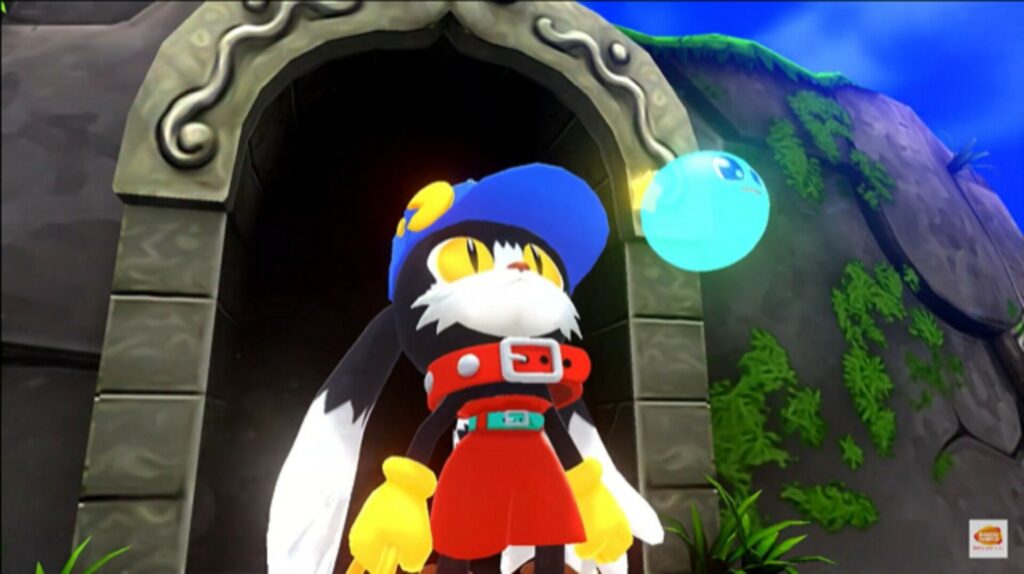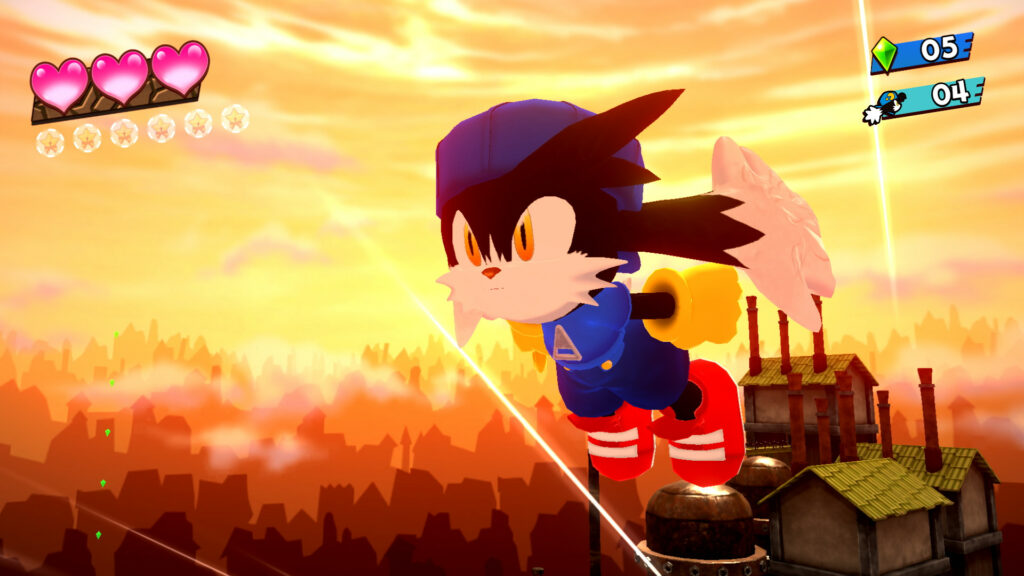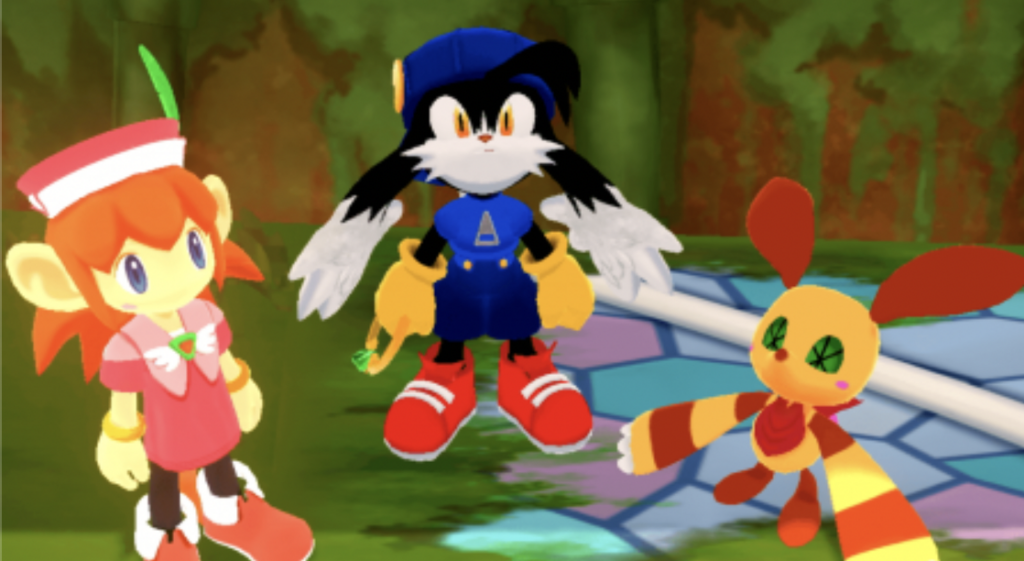In 1996, development began at Namco on a new 3D platformer for the PlayStation. It would be Hideo Yoshizawa’s (Ninja Gaiden) first foray into 3D games, and fans were curious as to what the director was cooking up. At E3 1997, they found out – Klonoa: Door to Phantomile was revealed and looked to be another “mascot” platformer for the PlayStation. With a cutesy art style and unique main character, the game released in Japan later that year on Dec. 11, 1997, and in the rest of the world in Spring 1998.
Upon playing the game, players realized Klonoa wasn’t just another 3D platformer. It was instead a new hybrid of sorts, combining 2D platforming with 3D environments. The game became a cult hit for Namco, and a sequel titled Klonoa 2: Lunatea’s Veil was released in 2001 on the PlayStation 2.
After the second game, the Klonoa series had some releases for the GameBoy Advance, but the series has remained pretty dormant since 2002. However, Namco didn’t forgotten about their plucky dream traveler for his 25th anniversary. Fans were shocked to see Klonoa Phantasy Reverie Series announced in February, which would include a remastered collection of Door to Phantomile and Lunatea’s Veil for modern platforms.
Fans of the series have been eagerly waiting for the collection since its announcement. Many (including myself) believe that if the game sells well, it could mean a return for the series. So that leads to the golden question. Is Klonoa Phantasy Reverie Series a worthy remaster of the first two games to entice new players? I’m happy to report that fans should be elated that Namco cared this much.

A remaster done right
Klonoa Phantasy Reverie Series should be a template for remasters moving forward. It takes both games and re-presents them in flawless 4K graphics and a smooth 60fps rate. In my playthrough of both titles, I never experienced any bugs, audio glitches, frame rate drops, or crashes on my Xbox Series X. Developer Monkey Craft has brought both games back with incredible execution.
There are new features to both games as well. Each includes a two-player cooperative mode that allows a friend to help the first player on strenuous sequences. The co-op is a great addition to help newcomers deal with some of the more tough platforming in the latter part of the games. The game also features a “stopwatch” mode that you can use to time your progress through levels. I imagine the speedrunning community will have a blast with this!
With all the new features out of the way, I thought the rest of this review would be a fantastic opportunity to review both games in the Klonoa Phantasy Reverie Series in their contemporary coat of paint. I played the original versions of both games, plus the Klonoa remaster in 2008 for the Wii. And I sincerely believe that this collection is the definitive way to play both now.
First. How does Klonoa stand out as a series?
Before I dive into both games, I want to give a quick rundown on how the Klonoa series plays. It’s a 2D Platformer that allows players to travel down paths toward the goal. Simple stuff, right? The two main features that differentiate it from others in the genre are the grabbing mechanic and the 3D routes players must travel to 100-percent complete the game.
The grab mechanic has Klonoa grab an enemy for an extra jump, to throw at enemies, or to throw in the foreground or background to hit obstacles and items. The pathways are multiple routes presented to the player that can go in numerous axis compared to just left and right. Both features make Klonoa feel much more than your typical 2D left-to-right platforming journey. So with that explained, let’s dive into both titles!

Step through the Door Of Phantomile
First up for Klonoa Phantasy Reverie Series is Klonoa: Door to Phantomile. The collection is a remaster of the 2008 Wii remake over the PS1 version. It’s the right call since the Wii edition is much easier to modernize to 4K graphics-wise than the PS1. But the beauty is the game still has the feel of a 2D platformer with 3D visuals and utilizes them to make for some unique platforming segments and levels.
And all of that still holds in the remaster. Door to Phantomile is a phenomenal platformer that holds up as one of the best of the PS1 era. The game’s execution of its two core mechanics is near perfection. Each level has a distinct feel and vibe that makes the game a blast to play through again.
But the real shock of Door to Phantomile is the simple yet shocking story. What seems at first to be just a cute platforming adventure takes a drastically sharp turn towards the end that still catches me off guard. As a kid, I sat in front of the television, stunned for 30 minutes the first time I saw it. As an adult, it still catches me in awe that the game had the stones to pull the ending it did. And it’s made even more impactful with the remastered graphics and music.
Personally, the best way to play Door to Phantomile is in this collection. I do think there is a charm to the original PS1 version, but a physical copy goes for around $230 for the US edition. So the best way to play that version is to buy it digitally if you have a PS3 or Vita from the PlayStation store. But I do believe your best way to play is in the collection.

The beauty of Lunatea’s Veil
Now to move on to the real gem of the Klonoa Phantasy Reverie Series, Klonoa 2: Lunatea’s Veil. Since 2001, Lunatea’s Veil has never seen a re-release or remaster. So to see it get one now is a massive deal to fans of the series. And Monkey Craft knew people were excited to play this under-appreciated gem again.
Lunatea’s Veil’s remaster is stunning. It highlights how marvelous of a sequel the game is. It does what any good sequel should do. It takes all the elements that worked in the first installment and expands upon them to make them better.
Lunatea’s Veil does this well with more diverse levels of design that use both core mechanics to masterful effect. There are new ways to explore this mysterious world. Some worlds have you flying around carnivals and factories. Some even allow you to hop on a water board and sled your way down to the end.
Now, these aren’t necessarily new to the genre. But it’s how Lunatea’s Veil presents them to the player using its mechanics. I’ve done sledding or water rapid levels before in other platformers. But there’s a whole new layer added on when you can take paths by finding enemies to use to jump to hidden areas. It makes for an absurdly fun time you don’t see in many other platforming games.
Bigger, better, stronger
Lunatea’s Veil also succeeds in adding more levels, more bosses, and more story and character. All three are handled exceptionally well throughout the game. Levels are definitely longer than in the first installment, but not in an overwhelming sense. It keeps pace so no area feels longer than the other.
The story isn’t as mesmerizing to me as Door to Phantomile was, but I would have been shocked if it was. It still is memorable as Klonoa himself is fleshed out a bit more. Plus, the new characters hold their own to be noteworthy throughout the game.
But the standout is the bosses. Each boss is so inspiring and unique from a gameplay and design aspect. They aren’t too hard, but how they play out makes them such a blast to defeat. I rarely do a boss rush mode after I complete a game. But I ran to do it once I beat the final boss. They’re that fun.
Like Door to Phantomile, the collection is the definitive way to play Lunatea’s Veil. There’s not much that separates it from the original PS2 release except the powerful performance and graphics. So save yourself the $75 to buy a PS2 copy and get this.

Klonoa deserves to come back
The whole time running through Klonoa Phantasy Reverie Series, I kept reminiscing on how tragic it is we had to wait more than 20 years to get a new installment. The series is so unique and special to the genre, and the fact there hasn’t been a new one in that long is a sobering thought. There are franchises that have run themselves into the ground with pointless sequels. So why hasn’t a series that deserves one received it?
The collection re-affirms throughout its whole playthrough that Klonoa deserves a genuine return. A third installment is a no-brainer now in the days of games needed of all sizes. With Xbox Game Pass looking for new titles monthly, Sony needs to flesh out their new Premium collection and Nintendo looking at a new console, a third Klonoa title should be something each company wants on their platform.
Final thoughts on Klonoa Phantasy Reverie Series
After years of not hearing from the franchise, Klonoa Phantasy Reverie Series shows it’s a tragedy we haven’t gotten a new installment in 20 years. I hope this collection does well. I hope a new generation of gamers sees how remarkable this series is. And, if things go well, Bandai Namco talks to Monkey Craft about possibly working on a third Klonoa installment.
It’s been far too long. We deserve to “WAHOO” in a whole new adventure, and this collection is a fantastic reminder of that.
Both games in Klonoa Phantasy Reverie hold up exceptionally well. The two core mechanics still are some of the most unique in the platforming genre and stand as some of the best platformers ever created. VERDICT
EXCELLENT
EXCELLENT
Klonoa Phantasy Reverie Series is developed by Monkey Craft and published by Bandai Namco Entertainment. It released on July 8, 2022, on Nintendo Switch, PS4/5, Xbox Series X|S, Xbox One and Windows.

